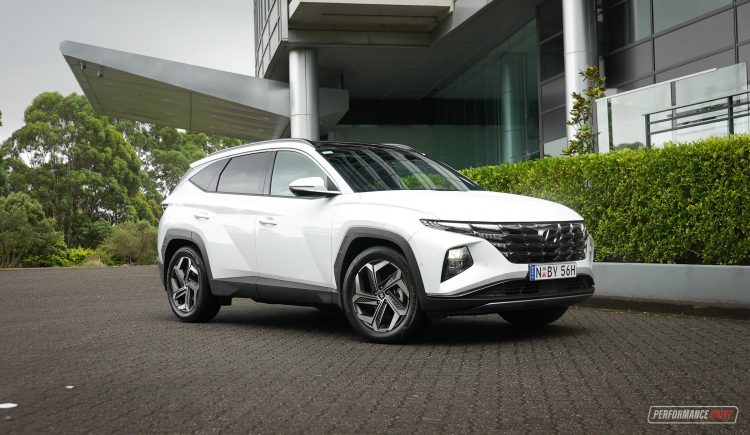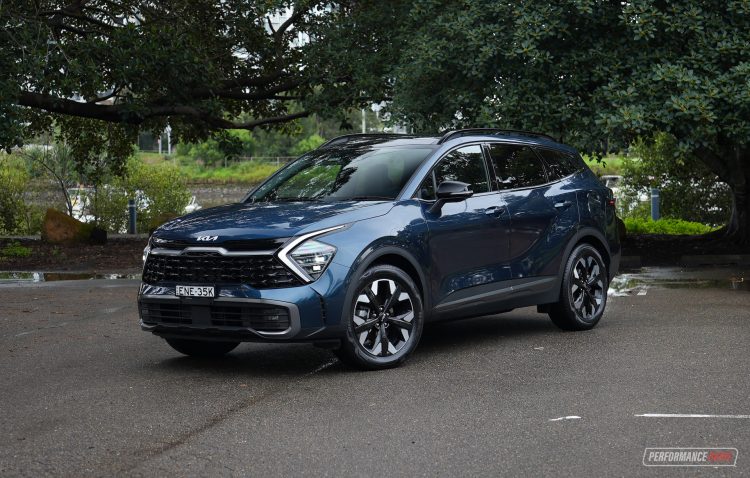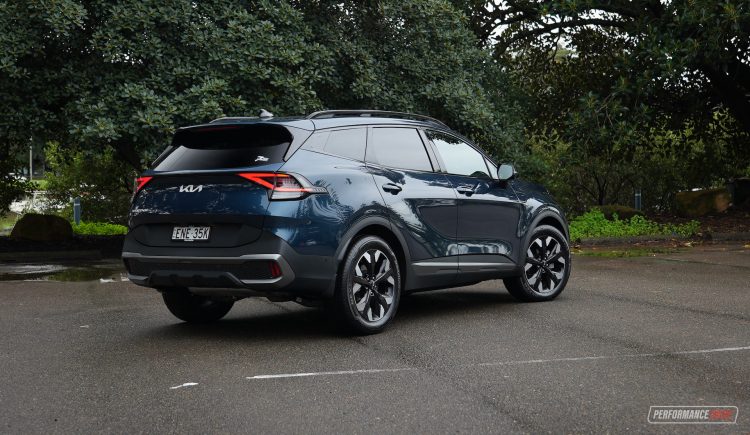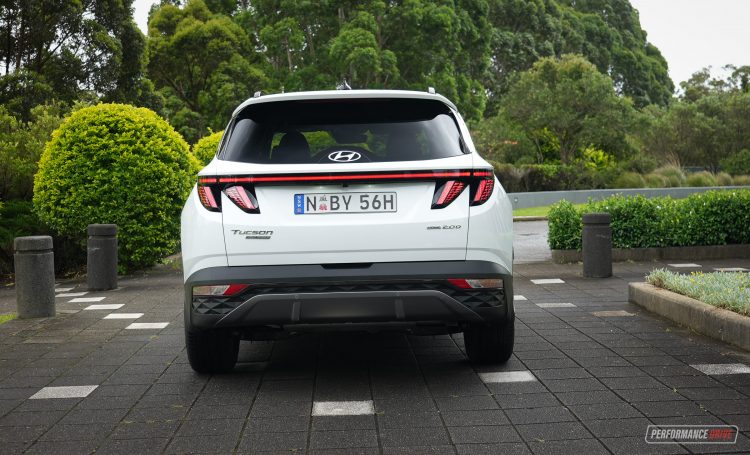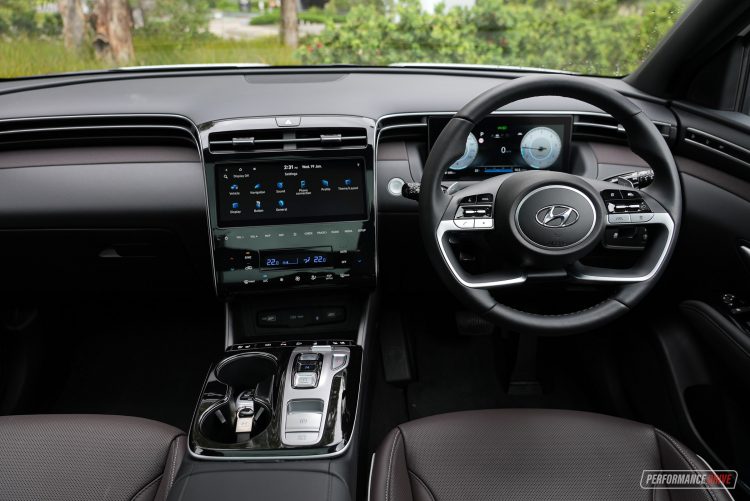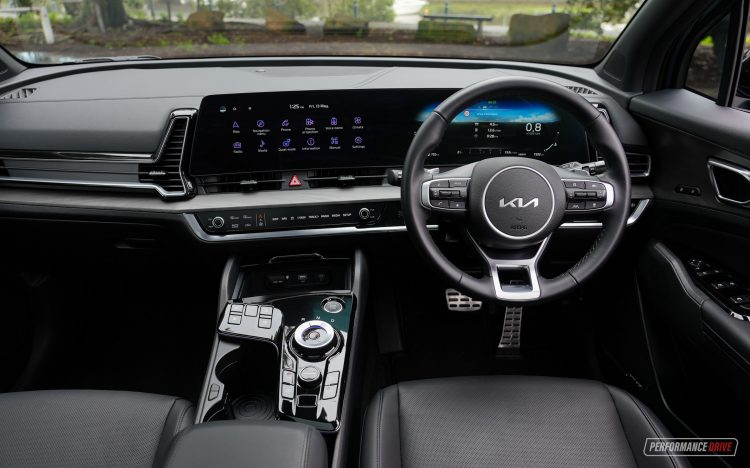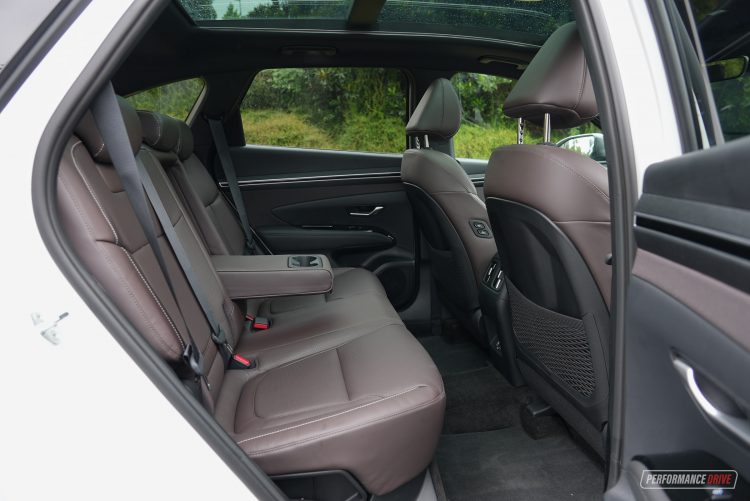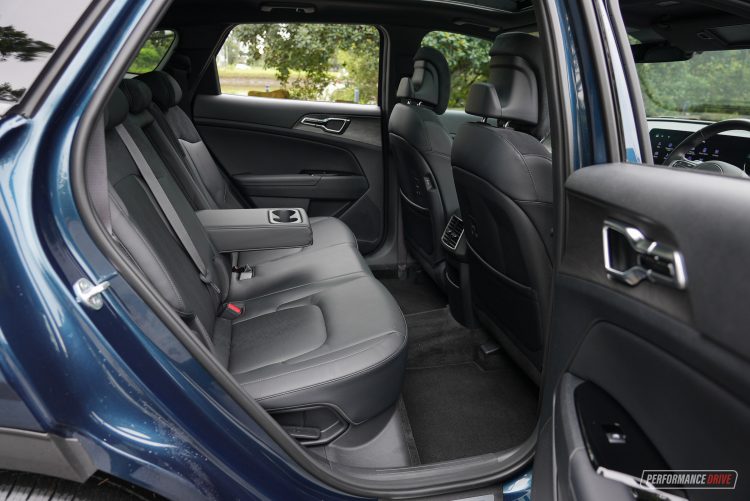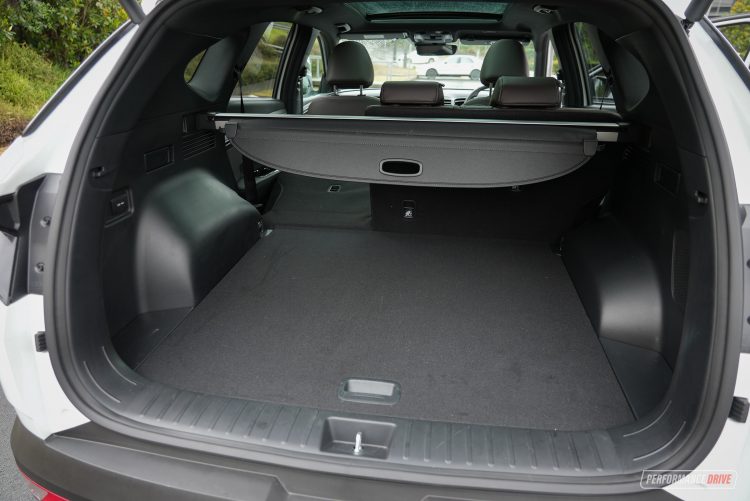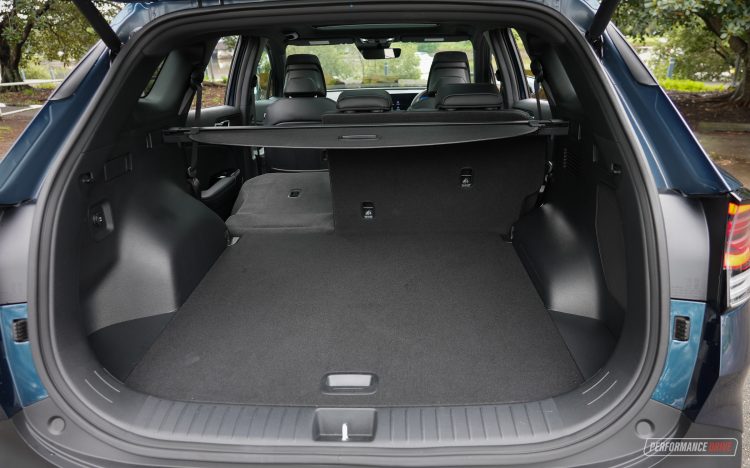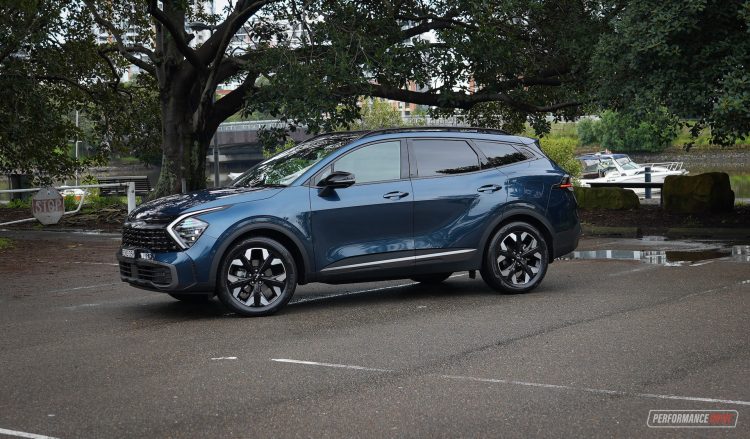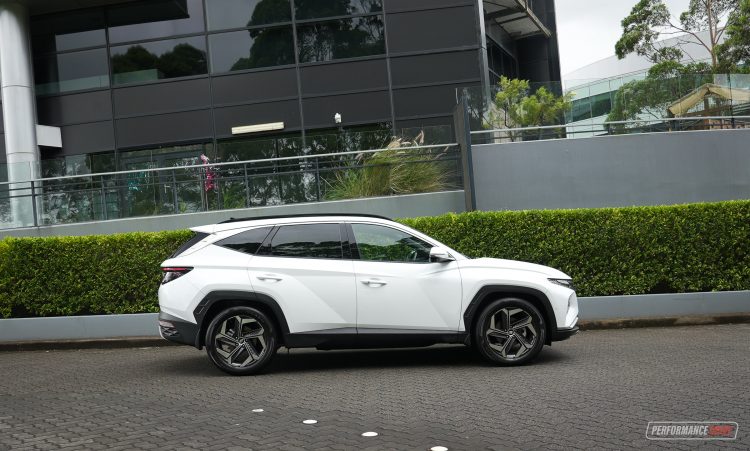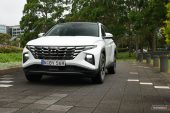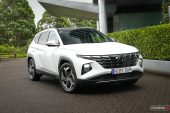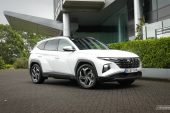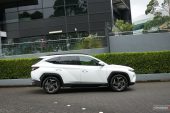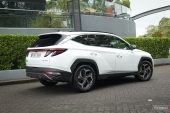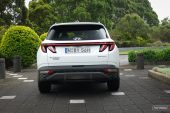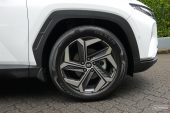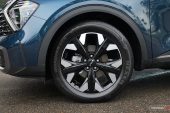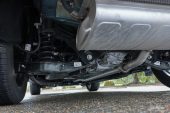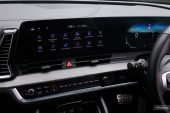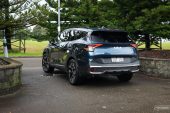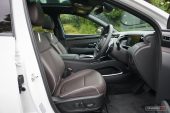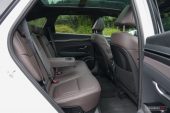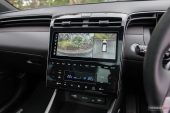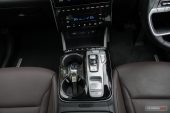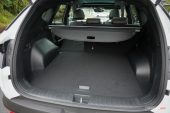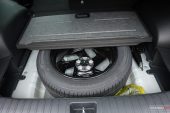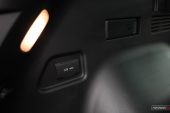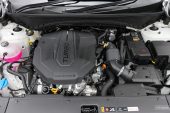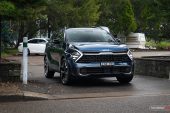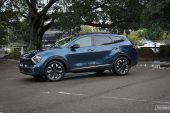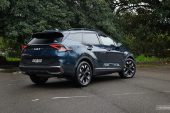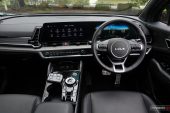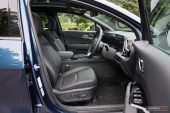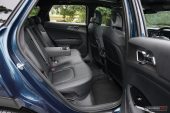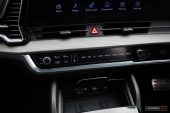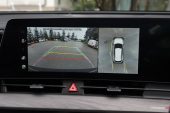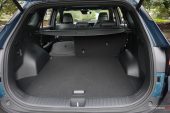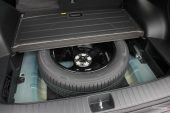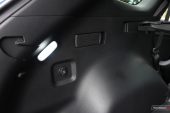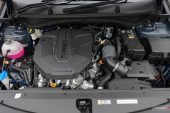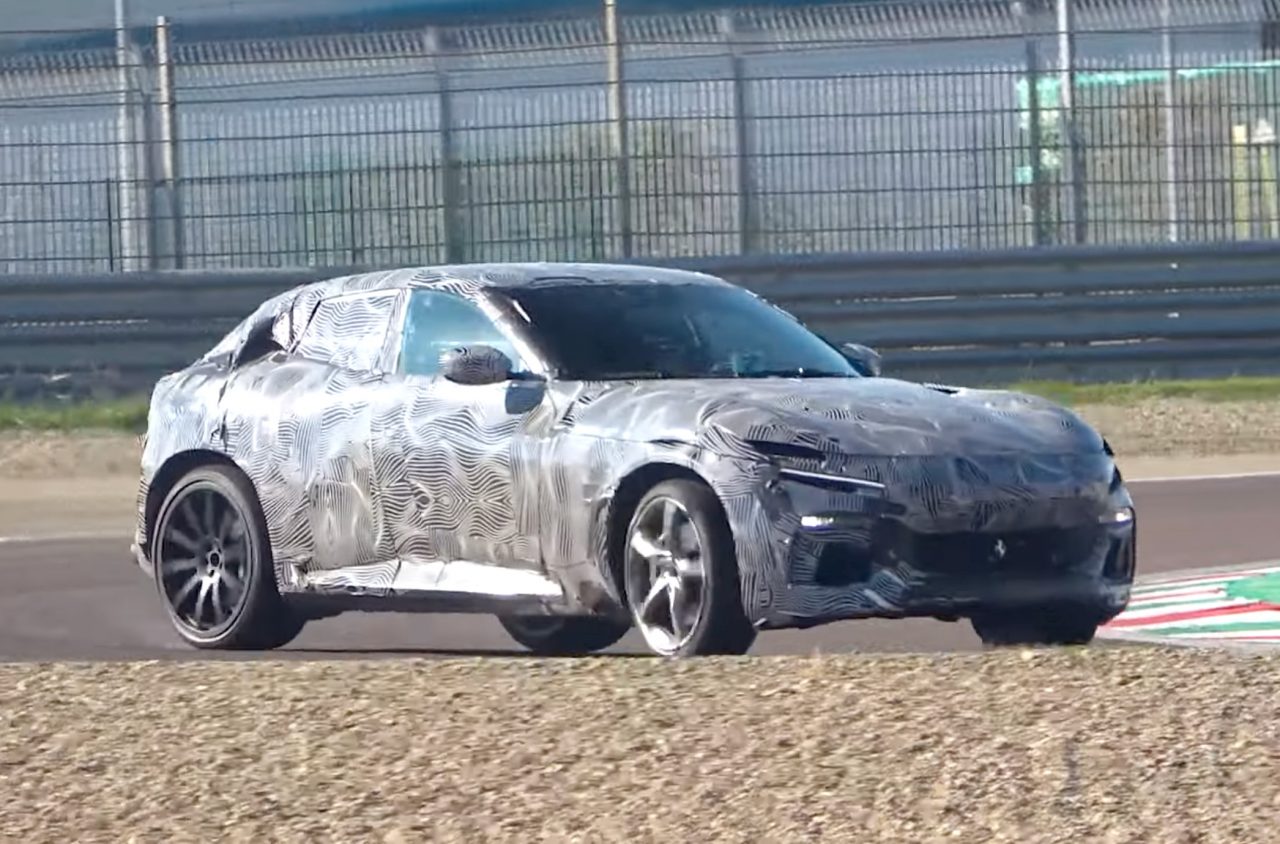Hyundai has done well for itself with the Tucson. It consistently appears in the top five most popular mid-sized SUVs. And it is one of the toughest market segments. However, there has been an influx of competitive new models coming out lately, including its cousin, the Kia Sportage.
According to VFACTS new vehicle registration figures, both the Hyundai Tucson and Kia Sportage are among the favourites. But, the Sportage is winning the race so far this year (through September). It has recorded 13,620 sales against 12,839 Tucson sales. Which is strange considering they share the same platform, powertrains, and offer a very similar set of features and practicality highlights.
For this test we’re comparing the flagship version of each, with the diesel engine option. Tucson Highlander versus Sportage GT-Line. Both use exactly the same 2.0-litre turbo-diesel, producing a robust 137kW and 416Nm, paired to an eight-speed auto gearbox that powers all four wheels on-demand.
Prices start from $52,400 for the Tucson and from $52,370 for the Sportage (excluding on-road costs). It’s worth noting Hyundai offers its Highlander with the full spectrum of engine options, from a 2.0L petrol, 1.6 turbo, and the diesel, while the Sportage GT-Line comes in 1.6 turbo-petrol and 2.0 diesel only. A hybrid and plug-in, offered overseas, continue to be off-limits for Australia. For now.
2022 Hyundai Tucson Highlander 2.0D – THE SPECS
[column width=”47%” padding=”6%”]Engine: 2.0-litre turbo-diesel four-cylinder
Output: 137kW@4000rpm / 416Nm@2000-2750rpm
Transmission: Eight-speed auto
Drive type: All-wheel drive
Wheels: F & R: 19×7.5, 235/55
ANCAP: Five stars
Tare weight: 1773kg
Power-to-weight: 12.94:1 (kg:kW)
Official fuel economy: 6.3L/100km
Economy during test: 6.8L/100km
Fuel capacity/Type: 54L/Diesel[/column] [column width=”47%” padding=”0″]Power efficiency: 21.74kW:L/100km
0-60km/h: 4.05 seconds*
0-100km/h: 9.01 seconds*
60-110km/h: 6.36 seconds*
1/4 mile: 16.47 seconds at 138.6km/h*
Max acceleration: 0.724g
100-0km/h braking: 3.18 seconds at 41.22 metres*
Max deceleration: -1.308g
Decibel at idle: 44*
Peak decibel at 60-100km/h: 80*
Priced from: $52,400[/column][end_columns]
2022 Kia Sportage GT-Line 2.0D – THE SPECS
[column width=”47%” padding=”6%”]Engine: 2.0-litre turbo-diesel four-cylinder
Output: 137kW@4000rpm / 416Nm@2000-2750rpm
Transmission: Eight-speed auto
Drive type: All-wheel drive
Wheels: F & R: 19×7.5, 235/55
ANCAP: Five stars
Tare weight: 1759kg
Power-to-weight: 12.83:1 (kg:kW)
Official fuel economy: 6.3L/100km
Economy during test: 7.1L/100km
Fuel capacity/Type: 54L/Diesel[/column] [column width=”47%” padding=”0″]Power efficiency: 21.74kW:L/100km
0-60km/h: 3.71 seconds*
0-100km/h: 8.31 seconds*
60-110km/h: 6.12 seconds*
1/4 mile: 16.10 seconds at 140.0km/h*
Max acceleration: 0.708g
100-0km/h braking: 3.23 seconds at 40.53 metres*
Max deceleration: -1.226g
Decibel at idle: 43*
Peak decibel at 60-100km/h: 80*
Priced from: $52,370[/column][end_columns]
* Figures as tested by PerformanceDrive on the day. Factory claims may be different
2022 Hyundai Tucson Highlander vs Kia Sportage GT-Line – THE PACKAGE
Hyundai has made huge leaps in external design with the Tucson. It looks sharper and more athletic than the previous generation. A new ‘parametric’ grille at the front catches your eye as it uniquely reflects light to make a cool pattern. We love how the outer segments of the grille amalgamate with the first column of LED lights.
The rear is also striking with its pointy LED taillights that bridge together across the width of the car. Very modern. Those parametric patterns are also mirrored on the lower rear bumper, exposing attention to detail. You also pick up on the cleaner design with the way the rear wiper hides into the spoiler when not in use.
Kia also does a fine job with design, and in some cases a more sporty theme than the Hyundai rivals, in our opinion. For the latest Sportage the designers have given it a bold new face, with various exclusive elements not seen on any other current Kia model. It looks very busy at the front, with an almost full-width grille dominating the face. It also looks quite sophisticated and modern.
Stepping inside, and the Tucson presents the levels of elegance expected from cars at a higher price point. But it doesn’t quite reach the wow-factor and practicality of it’s sibling. Presentation and quality are both spot on. Brushed metal look areas on the seat backs and door handles, and the way the air vents blend into the design of the dash looks classy on the Tucson, while the wood-like finishes, suede seat sections and convenient yet nicely executed storage solutions are very well done in the Sportage.
Sophistication comes to mind when you see and feel how the buttons in the centre console work in the Tucson, with no physical clicking. The layout is symmetrical and uncluttered, which makes the space feel neat and simple to navigate. It also helps that there are gear buttons instead of a bulky gearstick. There is lots of storage on offer, including an area in front of the gear selector buttons, drivetrain tunnel lower shelves on both sides, large door pockets and bottle holders, and a generously sized centre console.
We think the console in the Kia is a bit more practical, offering more storage space and cool spin-out cup holders and a big centre box. The single-piece housing for the giant twin curved screens is also spectacular for this market segment. The touch-screens in both look superb and are easy to read with their minimalist menu layouts.
Even though the Tucson and Sportage are only mid-sized SUVs, you’ll be surprised with how much wriggle room you have. In the first and second rows, legroom and headroom is generous. But there is no option for a third row like in some rivals. Hopping in and out is made easy thanks to that extra SUV height, with climate vents and charging ports for rear passengers in both of these. Disappointingly, the sound of the doors closing is tinny and hollow in both.
Boot space is competitive for this class, and, as expected, very similar between these two. The Tucson measures in at 539 litres and the Kia Sportage offers 543 litres. When the second row is folded down (and the seats fold completely flat), with pull-tabs presented in the boot in both, the space grows to 1860 litres and 1829 litres, in favour of the Hyundai.
Being the highest-spec models, you can expect an exhaustive list of features and safety tech. Some highlights include forward and reverse collision mitigation with pedestrian avoidance, post-collision mitigation, 360-degree cameras, front and rear cross-traffic alert, distance-controlled cruise control, lane departure warning with passive steer assistance, active lane-keeping aid with blind-spot cameras, side door exit warning, a glass roof with a powered blind, partially leather seats, heated and ventilated front seats, a powered tailgate, a full-sized spare alloy wheel, and wireless phone charging capability.
Deciding between these two on spec alone is a very tough task. Instead, we’d recommend sitting in both and getting a feel for which layout and design connects with your taste the most.
Hyundai offers a five-year, unlimited kilometre warranty, 12 months of free road-side assistance, and capped-price servicing. Servicing is required every 12 months or 15,000km. Kia edges in front in this area with seven years warranty, with the same service intervals.
2022 Hyundai Tucson Highlander vs Kia Sportage GT-Line – THE DRIVE
The unassuming 2.0L turbo-diesel is slowly dwindling in numbers as manufacturers turn to petrol-electric hybrids to reduce fuel consumption. But we’re glad Hyundai and Kia still offer one here. You can’t beat that confident diesel torque. And it peaks at 416Nm from 2000rpm (up from 400Nm in the predecessors).
Yet there is still a decent amount of power, too. 137 kW is 1kW more than the predecessors but it does the job quite suitably. There is no diesel laziness thanks to that turbo boost. It performs well on low and medium acceleration as it pulls away with confidence. Though, full throttle seems to achieve a similar outcome to medium throttle.
We did some 0-100km/h tests with a Vbox, on different days, and the Tucson recorded the sprint in a best time of 9.01 seconds while the Kia was slightly quicker with a time of 8.31 seconds. Why is there a difference? We tested these on completely different days and in fact the temperature was 19 degrees during the Tucson test and just 9 degrees during the Sportage test. The Sportage is 14kg lighter, but that’s hardly going to make a difference. Instead, we’d suggest taking the Kia’s time as a possible achievement in the Tucson as well.
It’s a relief the turbo-diesel scores a conventional eight-speed automatic gearbox instead of the jerky seven-speed dual-clutch auto offered in the 1.6 turbo-petrol models. There are no irregular acceleration traits, and no take-off hesitancy here. It just smoothly and effortlessly makes progress. The engine is also surprisingly quiet and happy to rev, for a diesel.
Fuel consumption is praiseworthy, with both offering an official average of just 6.3L/100km. Who needs a hybrid? Our average over approximately 500-600km travel gave similar results, with 6.8L/100km in the Tucson and 7.1/100km in the Sportage. Again, they both should be exactly the same after extended use. Even the 235/55 Nexen Roadian GTX tyres, mounted on 19-inch alloy wheels, are identical.
A special mention goes to the suspension and dynamics in the Tucson. It absorbs bumps with impeccable composure. Locally-tested for the Australian market, it glides over country roads with minimal disturbance or noise entering the cabin. But not so much to make it sloppy around corners either. The balance between comfort and dynamics is spot-on. We also notice the steering and tracking holds parallel in the lane with less intervention required than many SUVs in the same class.
Kia also has a locally-tuned setup, separate to Hyundai’s tune. In our view, the Sportage is slightly firmer and sportier. It seems a touch more eager to tackle bends, and we like the steering wheel more so than the Tucson’s ugly four-spoke design. So, if you favour a spirited drive over outright comfort, you’ll warm to the Sportage. However, they are very similar in regular conditions and under normal demands.
There is plenty of grip from the tyres and all-wheel drive setup, and a few driving modes to pick from. That makes them well-versed SUVs for light off-road work. But don’t go too thick into bush, as a mediocre ground clearance of 181mm on both means these are not bush bashers.
A full-sized alloy spare wheel is a rare bonus, featured on both. Having the diesel over the petrol increases your braked towing capacity from 1650kg to 1900kg in both as well.
2022 Hyundai Tucson Highlander vs Kia Sportage GT-Line – THE VIDEO
2022 Hyundai Tucson Highlander vs Kia Sportage GT-Line – THE VERDICT
These are both well-rounded packages. You get a modern design inside and out, a wonderfully presented and spacious interior, and a comprehensive feature list for the price, with all the on-board tech you need. The diesel also feels like the superior powertrain over the petrol alternatives. Acceleration is smoother and fuel consumption is lower. You also get AWD as a standard bonus.
For us, the Tucson’s overarching theme is that it is easy to drive, offers comfortable and supportive suspension, and a slightly more premium interior look and feel over the Sportage. Meanwhile, the Kia is a bit more engaging to drive, showcases a sportier interior, and is a bit more practical in terms of ergonomics and in-cabin storage. For these reasons, and the fact it comes with a superior seven-year warranty over Hyundai’s five-year arrangement, the Sportage is our first choice.
As always, if you’re thinking about buying a new car don’t forget to click here to speak with our car buying specialists.
